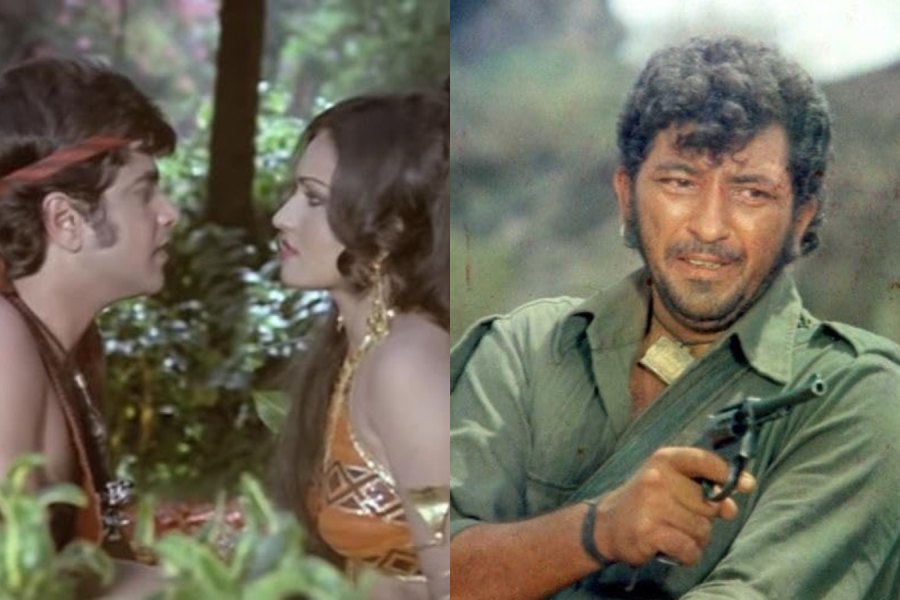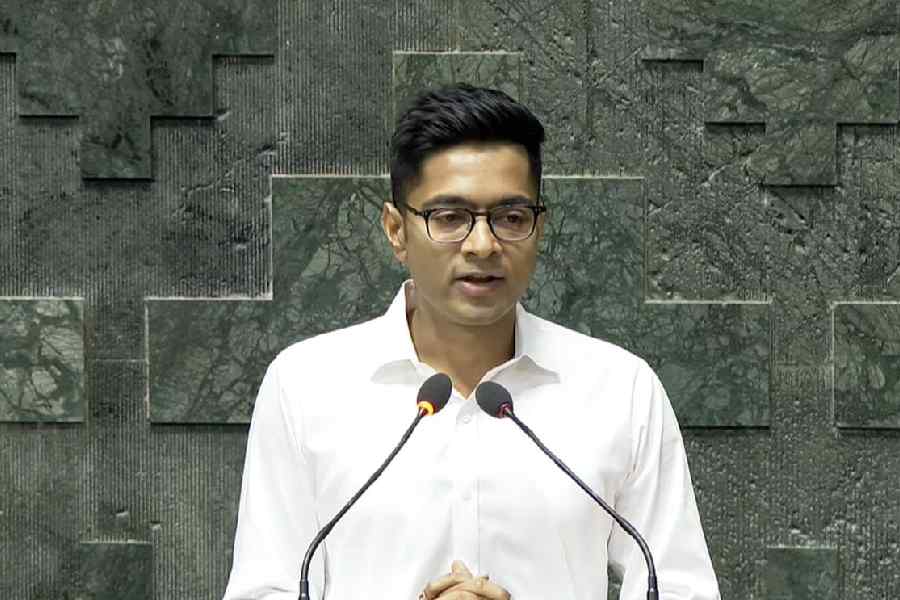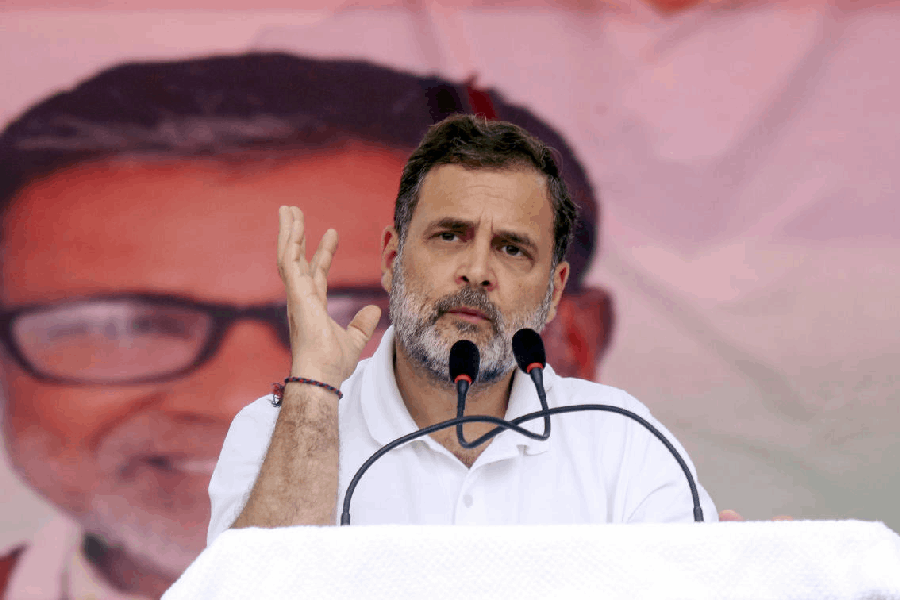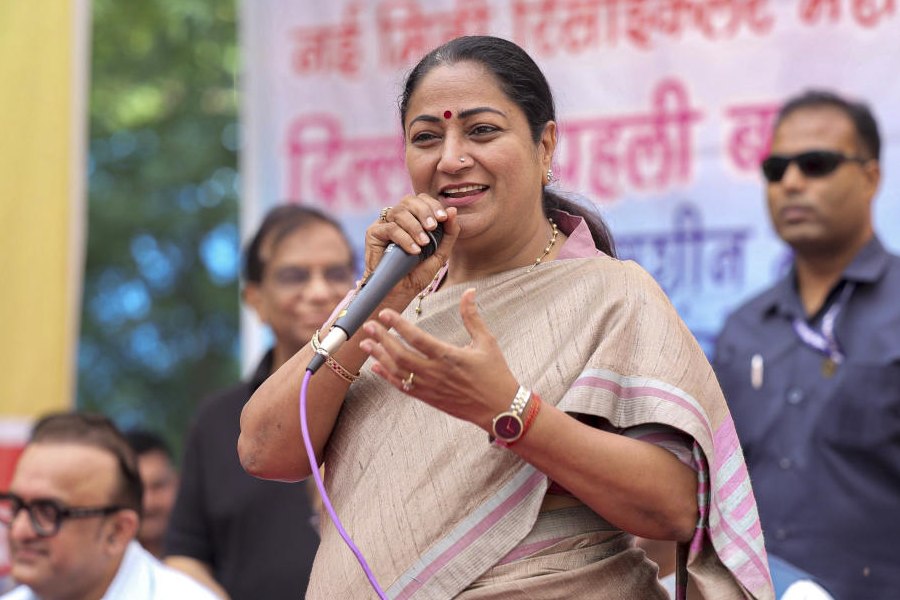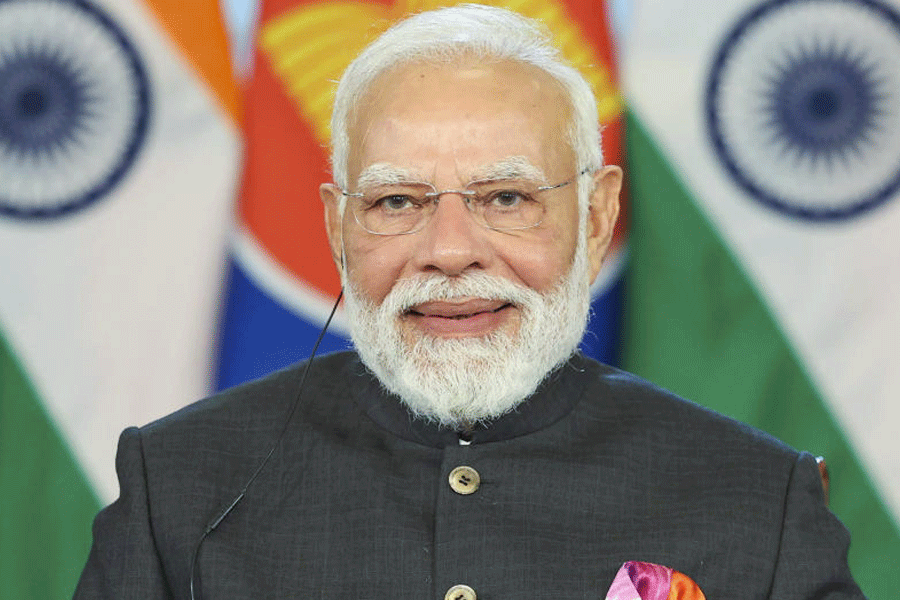When was the last time you came across a shape-shifting entity dancing to a been in a Hindi film, or a police officer in a climactic showdown with his smuggler brother, with whom he has just been reunited ‘bees saal baad’? Or, watched a sumptuous mujra redolent of Urdu poetry and tehzeeb? Or, heard the words of a dreaded dacoit echo in the darkness of the hall?
Hindi cinema has always been a dynamic entity, absorbing, reflecting, and refracting the changing tides of society, politics and popular taste. Across the decades, certain genres have captured the imagination of viewers, grown into powerful narrative tropes and then, quietly or dramatically, disappeared. Among the most evocative of these now-extinct or critically endangered genres are the Nagin film, the dacoit drama, the reincarnation narrative, the brother-against-brother melodrama, and the families lost-and-found escapades. At one time, each of these had a devoted following and delivered box-office gold. Today, they barely figure in the cinematic landscape, either as genre or mood.
Nagin films: The death of mythic melodrama
Remember Hemant Kumar’s unforgettable been in Nagin (1954) that spawned a whole genre? A genre unlike any other in world cinema, the nagin film had its roots in folk tales and mythological beliefs about shape-shifting serpents. These films were drenched in supernatural spectacle, revenge dramas with strong female protagonists (often the nagins) and unforgettable music.
Naagin (1976), starring Reena Roy and Jeetendra, was a landmark success that triggered a wave of similar films: Nagina (1986), which catapulted Sridevi to superstardom, its follow-up Nigahen (1989) and Sheshnaag (1990), among others. These movies drew audiences with a potent mix of eroticism, revenge, music and myth. Sridevi dancing to ‘Main Teri Dushman’ in Nagina remains an iconic pop culture moment. There were hilarious embarrassments too, for example, Doodh Ka Karz (1990) and Tum Mere Ho (1990), the latter starring Aamir Khan – yes, even he has played a sapera!
The appeal of the genre lay in its ability to marry Hindu mythology with pulp entertainment. The female protagonist, often betrayed or wronged, used her mystical powers to avenge herself, giving rise to strong woman-centred narratives long before feminism became a buzzword in Bollywood. However, with the liberalisation of the economy in the 1990s and the growing appetite for realism, urban stories, and westernised aesthetics, the nagin film seemed too campy, too folkloric, too unsophisticated for the multiplex generation. Television kept the genre alive in the form of the long-running Naagin serials, but in cinema, the shape-shifting serpent lost her bite.
What also contributed to its demise was the CGI revolution. What was once acceptable as visual spectacle in the analog era now looked painfully outdated. Attempts to revive the genre, like Hisss (2010), failed spectacularly. Bollywood no longer knew how to make myth resonate.
Dacoit films: From Chambal to obsolescence
The dacoit film was Hindi cinema’s home-grown Western. Rooted in the ravines of Chambal and Bundelkhand, these were often moral fables of honour, betrayal, caste oppression and revenge. Drawing from real-life figures like Phoolan Devi or Maan Singh, the genre flourished from the 1950s through the 1980s.
Early classics like Mother India (1957), Ganga Jumna (1961) and Mujhe Jeene Do (1963) were path-breaking in how they linked rural rebellion with social injustice. By the 1970s, the genre evolved into high-octane action dramas: Mera Gaon Mera Desh (1970) and the monstrous hit it inspired, Sholay (1975), though the latter is more a masala hybrid than a pure dacoit film. Almost every top star played a daku in films, including Amitabh Bachchan in Ganga ki Saugandh (1978). Filmmaker Sultan Ahmed (Heera, Dharam Kanta, Daata) became a one-man institution specialising in films about dacoits.
In the 1980s came a wave of exploitation films featuring women as dacoits, all of them starring A-list actors. These included Hema Malini’s Ramkali (1985) and Sitapur Ki Geeta (1987); Daku Hasina (1987), starring Zeenat Aman; and Kasam Suhaag Ki (1989) starring Rekha. Dimple Kapadia played a dacoit in a series of forgettable outings like Mera Shikaar, Gunahon Ka Faisla and Mahaveera — all three, incredibly, in 1988 — and Kaali Ganga. Each film followed the same tropes and themes – and had a similar, low-budget, B-film aesthetic – and yet found favour with viewers particularly in B and C centres.
The genre’s more politically conscious avatars include Bandit Queen (1994), a brutal, unsparing account of Phoolan Devi’s life, and Paan Singh Tomar (2012), which examined how an athlete turned rebel due to systemic neglect and oppression.
The dacoit film died a slow death due to a number of factors: the political rehabilitation of dacoits in real life, the end of the Chambal menace, the decline of rural narratives in Bollywood, and a growing preference for urban crime thrillers. The rustic antihero gave way to the sleek gangster. The huge commercial failure of Rahul Rawail’s brilliantly raw Dacait (1987) drove the last nail in the coffin. Moreover, land reforms, the spread of mobile networks, and the reach of media into India’s hinterlands meant that the landscape that had birthed the dacoit no longer existed in the same form. The ravines were no longer fertile ground for cinematic myth-making.
Brothers on opposite sides of the law: Melodrama’s vanishing spine
Perhaps no theme was as foundational to the masala structure of 1970s and 1980s Hindi cinema as the trope of brothers separated in childhood or siblings pitted against each other, one becoming a law-abiding citizen, the other a criminal. It offered a potent metaphor for the moral anxieties of a nation in flux, torn between idealism and survival, law and anarchy, family and society.
Films like Deewaar (1975), Amar Akbar Anthony (1977) and Ram Lakhan (1989) rode on this emotional spine. The conflicts were never subtle – the good brother was often in khaki, the bad one in flashy suits. But the emotions were volcanic. The dialogue ‘Mere paas maa hai’ became shorthand for an entire era of Hindi film melodrama.
This genre faded not only because of changing cinematic preferences but also because of shifting social structures. The joint family, once the heart of such conflicts, was coming apart. Urbanisation, globalisation and liberalisation created new types of moral dilemmas that the old binary of good brother vs bad could no longer contain. Modern narratives are more psychologically nuanced, morally grey, and less interested in grand gestures of familial sacrifice.
The lost-and-found films: Separated brothers and reunited families
There was a time in Hindi cinema when no trope was more guaranteed to draw audiences than the ‘lost-and-found’ formula: siblings torn apart by fate, parents separated from children, only to be miraculously reunited in the climax. Most famously epitomised by films like Waqt (1965), Yaadon Ki Baaraat (1973) and Amar Akbar Anthony (1977), this genre wove themes of family, destiny, karma and divine justice into a sweeping melodramatic structure that audiences embraced wholeheartedly. It has since all but vanished, leaving behind a trail of nostalgia and cinematic legend.
The roots of the genre lie in the core Indian value system: family as the ultimate emotional unit. In a culture where familial bonds often transcend even romantic ones, the disintegration and eventual reunion of families created a potent emotional pull. Audiences didn’t just watch these stories, they lived them. The formula, though rigid in structure, allowed infinite variations: siblings split at a temple fair, parents separated by natural calamities or evil villains, children adopted into vastly different socio-economic classes, and long-lost family members unaware of their blood ties until a final emotional revelation – often involving lockets, birthmarks or songs. It also spawned one of the funniest climactic lines in Hindi cinema in Gulzar’s Angoor (1982) – involving two sets of lost twins – that lampoons the birthmark fetish of these films.
Yash Chopra’s Waqt (1965) is widely credited with popularising this genre in its modern form. Three brothers are separated in childhood after a massive earthquake. One grows up a rich man’s adopted son, another a conman, the third a lawyer. Fate eventually brings them together in court and in conflict. Waqt wasn’t just a family saga, it was a cinematic blueprint, merging melodrama with ensemble star power, and establishing the ‘multi-starrer’ trend that dominated the ’70s and ’80s.
The genre reached its zenith in the 1970s. Nasir Hussain’s Yaadon Ki Baaraat showcased three brothers separated after witnessing their parents’ murder, each growing up with a distinct identity: one a singer, another a crook, and the third a quiet mechanic. Their signature childhood song, remembered differently by each, becomes the thread that reunites them.
Others may have invented the formula but Manmohan Desai made an epidemic of it. The man with the Midas touch found a different way to separate and unite families in almost every film of his in the 1970s. Amar Akbar Anthony transformed the genre into a secular parable: three brothers raised in Hindu, Muslim and Christian households, coming together in a spectacular masala mix of faiths, fights and farce. It wasn’t just about family anymore; it was about a fractured India healing through its popular cinema.
Through the decade and after, Desai kept the genre alive with films like Parvarish, Suhaag, Dharam Veer, Chacha Bhatija and Naseeb, usually starring the reigning stars of the day – Amitabh Bachchan, Vinod Khanna, Dharmendra. These films provided grandiose emotional payoffs: villains punished, family bonds restored, and society reset to its ideal moral order. The stories were formulaic but that was their strength. The predictability wasn’t a flaw – it was a comfort, a reaffirmation of the moral universe where dharma ultimately triumphed.
However, the genre began to falter in the 1990s. The reasons were manifold. The rise of globalisation and cable TV changed audience tastes. Urban viewers began gravitating towards realism or glossy romance, while the diaspora-focused films of Aditya Chopra and Karan Johar centred on already-intact nuclear families rather than fractured ones. With the moral binaries of earlier decades giving way to greys, the neat emotional resolutions of the lost-and-found genre began to lose its charm.
Moreover, the emergence of the multiplex audience, more fragmented and less homogenous than the single-screen crowd, meant that such sweeping melodramatic narratives lost their mass appeal. Instead, familial dysfunction was explored with nuance in films like Dil Chahta Hai (2001) or Kapoor & Sons (2016), which dealt with fractured relationships but in an entirely different register – introspective rather than operatic.
Interestingly, the genre has seen ironic or nostalgic revivals. Om Shanti Om (2007) cheekily referenced the lost-and-found formula, paying tribute to the era even as it parodied it. But no contemporary film-maker has earnestly attempted to recreate it in its full emotional glory. Today, the genre survives more as a meme or homage than a living narrative form.
What was once the beating heart of mainstream Hindi cinema – families split by fate and reunited by destiny – now feels like a relic from another emotional universe.
The reincarnation saga
From the 1950s to the early noughties, reincarnation films were not only popular but deeply resonant, often blending themes of love, revenge, destiny and justice across lifetimes. This genre is gradually fading from mainstream Bollywood storytelling.
The golden era of reincarnation films arguably began with Madhumati (1958), directed by Bimal Roy and written by Ritwik Ghatak. A gothic romance with a haunting atmosphere, it revolved around lovers separated by tragedy, only to reunite in another lifetime. Its success set a template that many films followed – reincarnation as a tool to correct past injustices or fulfil uncompleted love stories.
The 1970s and ’80s saw a peak in such storytelling. Films like Karz (1980), with its iconic music and dramatic plot, explored reincarnation in a modern setting, linking past lives with material revenge. Mehbooba (1976), Neel Kamal (1968) and Kudrat (1981) also leaned heavily into the metaphysical, often blending romance with supernatural thriller elements. These films offered more than just escapism; they presented a moral universe where karma was inescapable, and emotional bonds transcended time.
The genre began to wane in the early years of the 21st century. Though Karan Arjun (1995), with its famous line ‘Mere Karan Arjun aayenge’ kept the reincarnation trope alive, the shift towards realism and western-influenced narratives saw a decline in overtly spiritual themes. The reincarnation motif became more symbolic or was pushed into the realm of fantasy or parody.
One of the last memorable entries was Om Shanti Om (2007), which cleverly paid homage to the reincarnation genre while also parodying the excesses of Bollywood. Its commercial success proved the genre’s nostalgic value but it did not revive it. And with Himesh Reshammiya’s Karzzz (2008), a stillborn rebirth of its celebrated 1980 original with a few z-s added to the title, more or less put the genre to sleep. Since then, while there have been sporadic efforts – such as Raabta (2017) – none have captured the emotional and cultural resonance of earlier films. These newer attempts often suffer from weak storytelling or an over-reliance on visual spectacle, missing the thematic depth of their predecessors.
The decline can be attributed to changing audience tastes, the rise of realism, and a shift away from spiritual themes in popular media. Perhaps, with the right story and vision, the genre might be reborn. As all things are, in time.
(Shantanu Ray Chaudhuri is a film and music buff, editor, publisher, film critic and writer)

